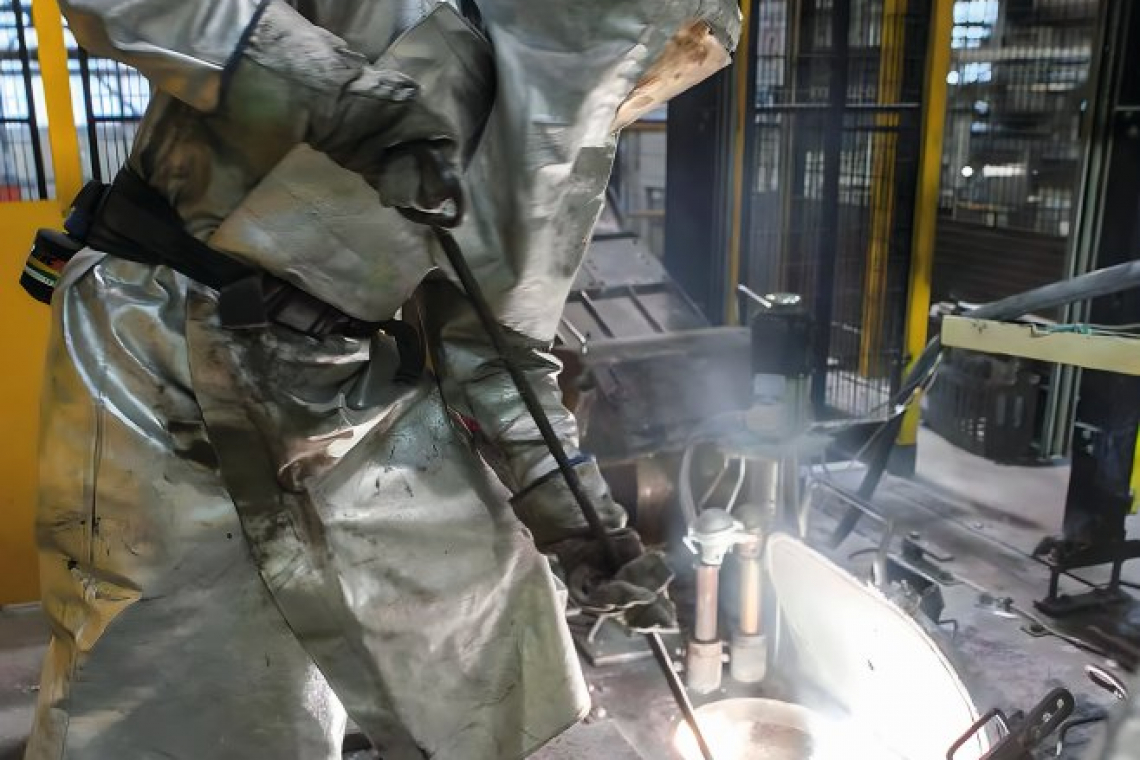Magnesium alloys are well adapted for use in structural and non-structural applications which can be easily fabricated from castings, extrusions, plates, sheets, and forgings. Casting is one of the major manufacturing processes for magnesium alloys and wrought products have gained applications in recent years. Magnesium alloys have HCP structure to possess low ductility, but warm working (above 260 °C) results in a few more slip planes operating to improve plasticity. Magnesium alloys, especially precipitation-hardened alloys, are used in casting.
Magnesium alloys can be categorized into two groups: cast alloys and wrought alloys. Cast alloys are primarily made by pouring the molten liquid metal into a mould, within which it solidifies into the required shape. Wrought alloys, on the other hand, are alloys subjected to mechanical working, such as forging, extrusion, and rolling operations, to reach the desired shape. Magnesium alloys harden rapidly with any type of cold work, and therefore cannot be extensively cold formed without repeated annealing. Although gentle bending around large radii can be performed at room temperatures, sharp bending, spinning, or drawing must be done at around 300 °C. Slow forming gives better results than rapid shaping. Press forging is preferred to hammer forging, because the press allows greater time for metal flow. The plastic forging range for magnesium is 260 to 425 °C, the metal worked outside this range can easily deform [1]. For magnesium alloy, the forming process can be mainly divided into liquid forming process and solid forming process.
Liquid forming (Die casting)
Die casting is the commonly used process of forcing molten metal into a mould cavity. Because of hexagonal crystal structure, magnesium alloys exhibit poor formability at room temperature. The difficulty to perform cold working is due to plastic deformation of the hexagonal lattice [2]. Therefore, die casting is the main and most widely used forming process for magnesium alloys. As the liquid viscosity of magnesium alloys is low, due to good fluidity it is easy to fill the complex cavity. Hence, these alloys have excellent die-casting process performance. The liquid moulding methods include gravity die casting, low pressure die casting, high pressure die casting, semi-solid casting, etc. (Figure 1).
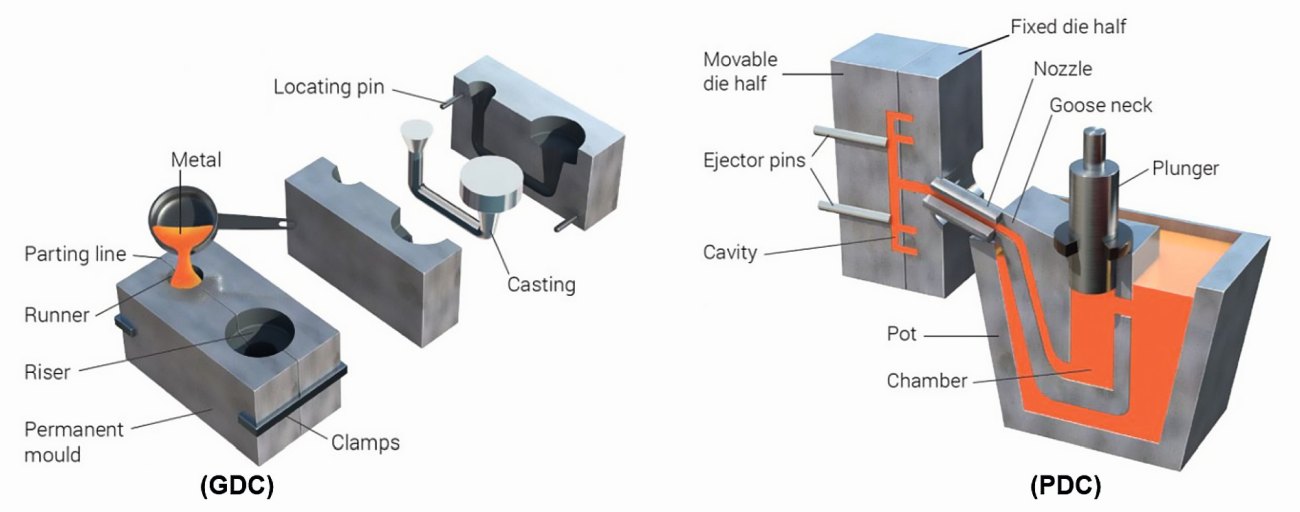 Fig. 1: Gravity die casting (GDC), and pressure die casting (PDC)
Fig. 1: Gravity die casting (GDC), and pressure die casting (PDC)
Gravity Die Casting: Magnesium alloy can be produced by different gravity casting methods, such as sand casting, fusion casting, metal mould casting, semi-metal mould casting, shell casting, etc. Among them, sand casting has gone through the various developmental stages, common clay sand, water glass sand and self-hardening resin sand. The self-hardening resin sand moulding process is simple, provides quality casting, and conducive to the automation of production of large and complex castings. In investment casting, also known as the lost wax method, several layers of refractory materials are coated on the surface of the wax mould that harden and dry. During the casting process when the molten metal is poured, the wax gets melted away. This leads to high dimensional accuracy and surface finish castings into a shell.
Low Pressure Die Casting: Magnesium alloys have low heat capacity. The large solidification intervals result in cracks formation, uneven filling, segregation, coarse structure, and other casting defects. Hence, it is difficult to produce large, thin-walled or complex structures by gravity die casting. Low pressure die casting involves injecting the molten material into the die-cast under a well-controlled low pressure. The continual smooth filling and sequential solidification characteristics give the process advantages to produce highly accurate castings.
Lost Foam Casting: Lost foam casting is a sand-casting process in which the mould consists of an evaporative polystyrene foam pattern embedded in sand. It is similar to investment casting except foam is used for the pattern instead of wax. It is a nearly zero margin, precise moulding casting technology and has the ability to cast very complicated castings with high precision and smooth surface finish. This method is also more economic than investment casting because it involves fewer steps, and less labour incentive. The process is especially suited for making complex parts with convoluted features such as engine blocks, transmission cases, and cylinder heads [3].
Semi solid casting: Semi solid processing works on the principle of a solidification temperature interval of a substance. The substance is heated to a temperature within this interval so that there exists a related solid-liquid fraction ratio. The substance with this phase structure is then shaped by a casting or forging process. The process involves filling a mould with the metal in a partially molten state in which globules of solid are homogeneously dispersed in the liquid. The benefits of semisolid casting are: reduced shrinkage due to the lower casting temperature, low gas porosity enabling heat treating of the castings, high mechanical properties due to the uniquely fine microstructure, and extremely fine surface finish. At present, semisolid magnesium alloys are mainly focused on aluminium-zinc (AZ) and aluminium-manganese (AM) series alloys. Semi-solid forming can be divided into rheo-forming and thixo-forming (Figure 2).
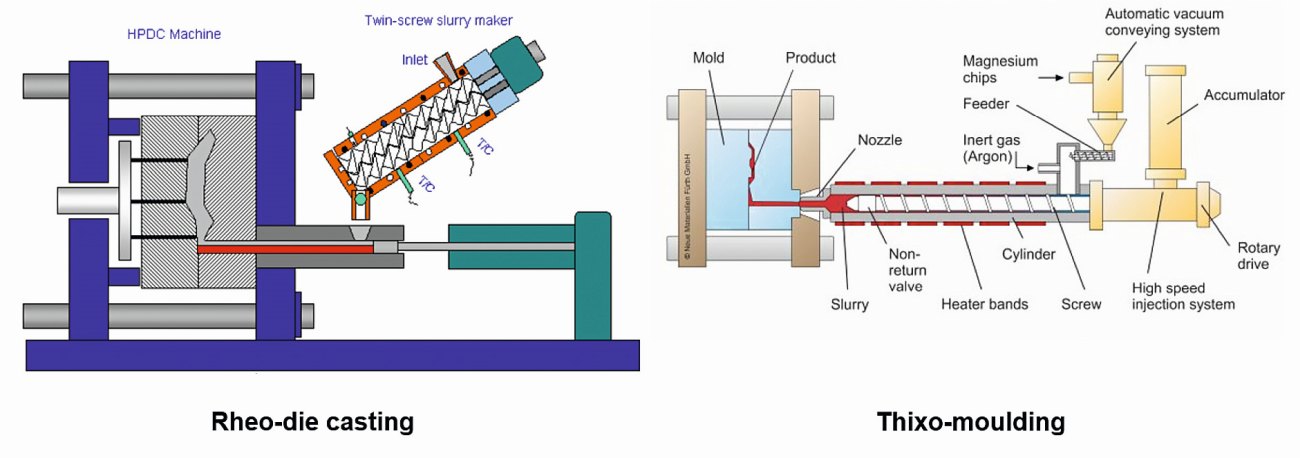 Fig. 2: Semi-solid forming rheo-die casting and thixo-moulding
Fig. 2: Semi-solid forming rheo-die casting and thixo-moulding
Rheo-die casting: In this process a metal-slurry is treated near liquidus by subjecting a forced homogenization for the fabrication of quality magnesium alloys. The rheo formed alloys have more finely and homogeneously dispersed structures, and superior mechanical properties. In rheo-forming processes, high pressure die casting (HPDC) and squeeze casting are the most promising processes for mass production of semisolid magnesium alloys [4].
Rheo-die casting = Slurry making + High Pressure Die Casting (HPDC)
Thixo-moulding: It is a commercial semi solid moulding process. It involves feeding pellets or chips of material into a heated screw-driven injection moulding machine [5]. While the temperature of the material is raised to a semi-solid stage under high shear rate mixing, an internal screw advances the mass toward the shot end. By the time the material mass reaches the shot end, the semi-solid slurry consists of nearly spherical solid particles suspended in a liquid matrix, which is injected into a preheated die cavity. The much lower metal temperature compared with die casting allows the casting of extremely thin wall (0.5-1.0 mm) magnesium for cell phones, cameras and computers [6]. Thixo-forming provides advantages of processing flexibility of plastic injection moulding with the strength produced by high-pressure diecasting.
Solid state forming
Solid state forming is also called plastic processing forming, including extrusion, forging, rolling, stamping, etc.
Extrusion: Magnesium alloys have poor plasticity. They are generally suitable for warm extrusion and hot extrusion moulding at 300-450 °C. Magnesium alloy extrusions have many advantages: they can refine the grain by retaining the extrusion fibre structure, they can improve the strength and they can acquire excellent surface quality with good dimensional accuracy. At present, magnesium alloy tube, bar, profile, strip products are used in extrusion forming. The disadvantages of magnesium alloy extrusion include, slow speed, deformation resistance, formation of weave structure due to the anisotropy of mechanical properties of material. An image of the direct extrusion process is illustrated in Figure 3.
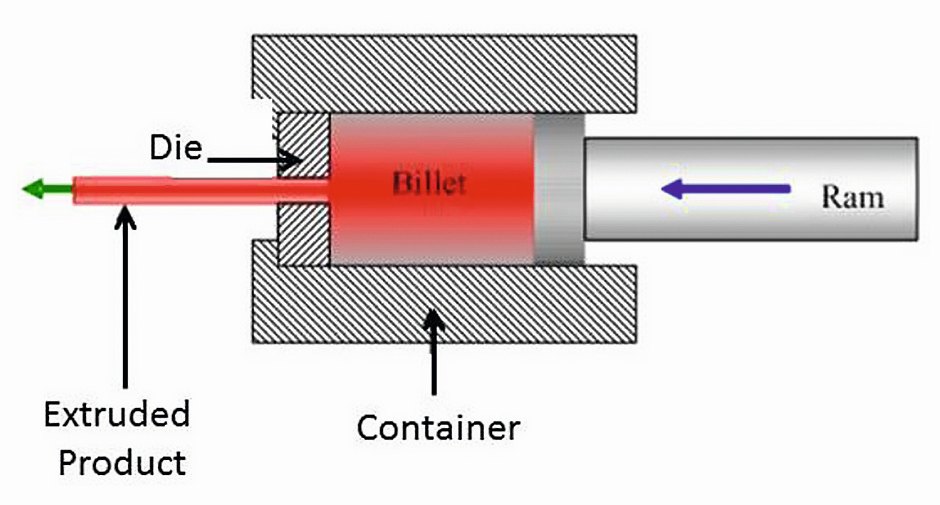 Fig. 3: Direct extrusion
Fig. 3: Direct extrusion
Forging: Magnesium alloys have two types of forging, free or open die forging and closed die forging (Figure 4). Commonly used to forge magnesium alloys are zinc-zirconium (ZK) and aluminium-zinc (AZ) series. Open die forging is one of the oldest forms of manufacturing, using traditional blacksmith methods to manipulate and refine grain flow. The billet is heated above the recrystallization temperature and gradually shaped by skilful hammering or pressing of the workpiece to create the desired shape.
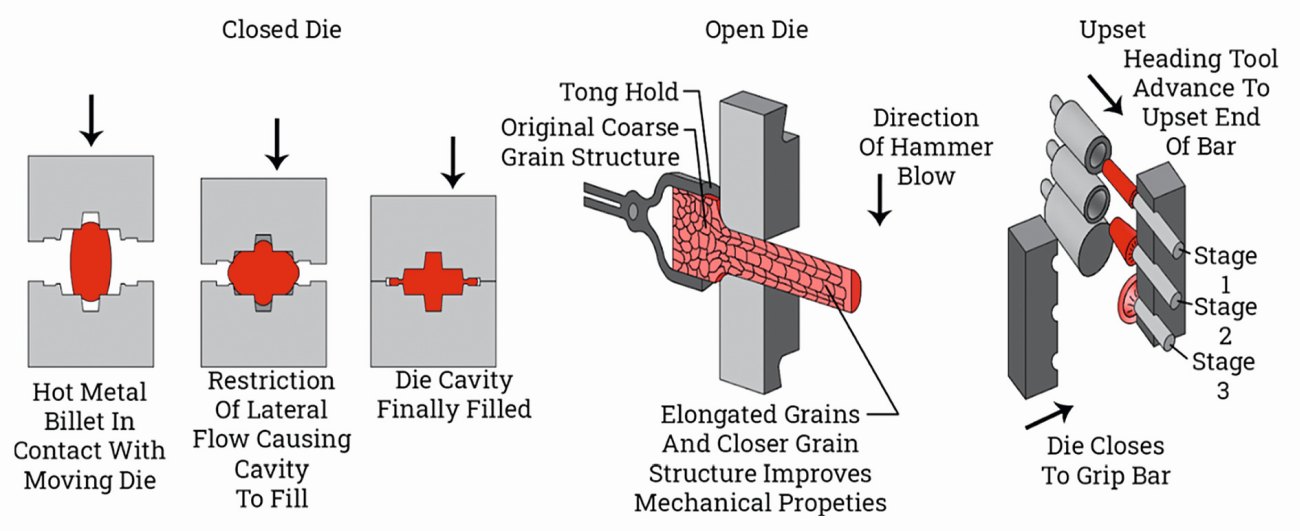 Fig. 4: Methods of forging
Fig. 4: Methods of forging
Closed or impression die forging or drop forging is a process that manipulates a heated metal bar, pre-form shape, or billet within the wall cavity of two dies. During this process, the material grain structure becomes compressed and aligned to the required component shape. This greatly improves the strength and resilience of the alloy.
Another die forging known as upset forging is accomplished by holding pre-heated material between grooved dies. Pressure is then applied to the end of the bar in the direction of its axis. The heading tool upsets the end of the bar by displacing the heated metal within a cavity. Many upsetting operations may be needed on one die set to gradually form the bar to its required shape.
The mechanical properties of magnesium alloy forgings usually depend on the degree of strain hardening produced during the forging process. The lower the forging temperature, the more significant is the strain hardening effect. The forgings are, however, prone to cracking when the temperature is too low, and oxidation is severe when it is too high. The isothermal precision forging process at elevated temperature can improve the formability of magnesium alloys. The process can form high-precision, complex-shaped forgings as the narrow temperature range results in reduction in plasticity, and increase in deformation resistance. The process is found favourable especially for magnesium alloys with rare earths. A combination of precision stamping and forging forming where heated magnesium alloy billet in the heating die for stamping and forging are used is a promising process. The key parameters for control are forming die design, die temperature, deformation rate and deformation speed. Compared with die-casting and semi-solid forming processes, this technology has the advantages of high production efficiency, and high yield at low cost.
Rolling: Magnesium alloy strips and plates are generally produced by rolling forming methods. Rolling process can refine the grain, homogenising the microstructure, significantly improving the mechanical properties of magnesium alloys. Rolling temperature is the key parameter in the rolling process. If the rolling temperature is too low, the high stress concentration can lead to twin nucleation and shear fracture. Whereas at too high rolling temperatures grains can easily grow and make the plate hotter and brittle. An illustration of roll forging is shown in Figure 5.
Machining, welding, soldering, and riveting: Magnesium has extraordinarily good machining properties like sawing, punching, drilling, milling, turning compared to other metals. The power requirement is low about 55 % of aluminium, extremely fine and smooth surface finish is achieved and the chips are short. Magnesium is the fastest machining metal. But when cutting speed is high the tools should be sharp and should be cutting at all times. Magnesium machining is normally done without any coolant, if required a light mineral oil can be used. The water-based coolant should not be used because of the risk of reaction with the chips during storage. High-speed tools (carbide, diamond tipped) are preferred. It is important to keep the cutting tool sharp to avoid too much heat. Dull, dragging tools may generate enough heat to ignite fine chips. There should be a designated grinding machine for magnesium alloy parts. The magnesium grinder should never be used for ferrous metals, since a spark might ignite the accumulated dust. Since chips and dust from grinding can have fire hazard, grinding should be done with a coolant, or with a device to concentrate the dust under water.
Many magnesium alloys can be easily welded by gas tungsten arc or plasma arc. Magnesium alloys are not welded to other metals, because the combination of metals may promote corrosion or formation of brittle intermetallic compounds. When two or more parts are welded together, their compositions must be the same. Magnesium is reactive and has a low melting point, it can easily catch fire when exposed to heat or sparks. One should take proper precautions and safety while welding. Soldering of magnesium alloys is limited to the filling of small surface defects in castings. Soldering should not be used in stress areas or to join magnesium to other metals because of low strengths and brittle joints. Riveted joints in magnesium alloy structures usually employ aluminium or aluminium-magnesium alloy rivets. Magnesium rivets are not used because they must be driven when hot. The rivet holes should be drilled, since punching tends to give a rough edge to the hole and to cause stress concentrations. The images of some magnesium alloy parts manufactured by casting and machining are shown in Figure 6 and 7.
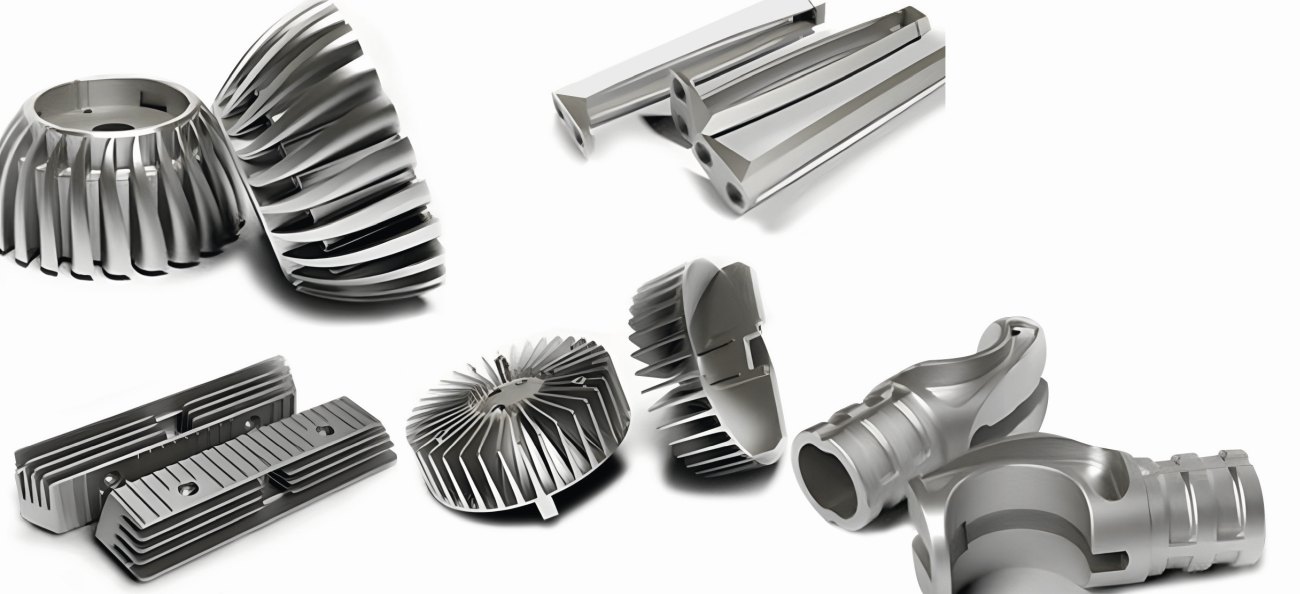 Fig. 6: Magnesium casting products
Fig. 6: Magnesium casting products
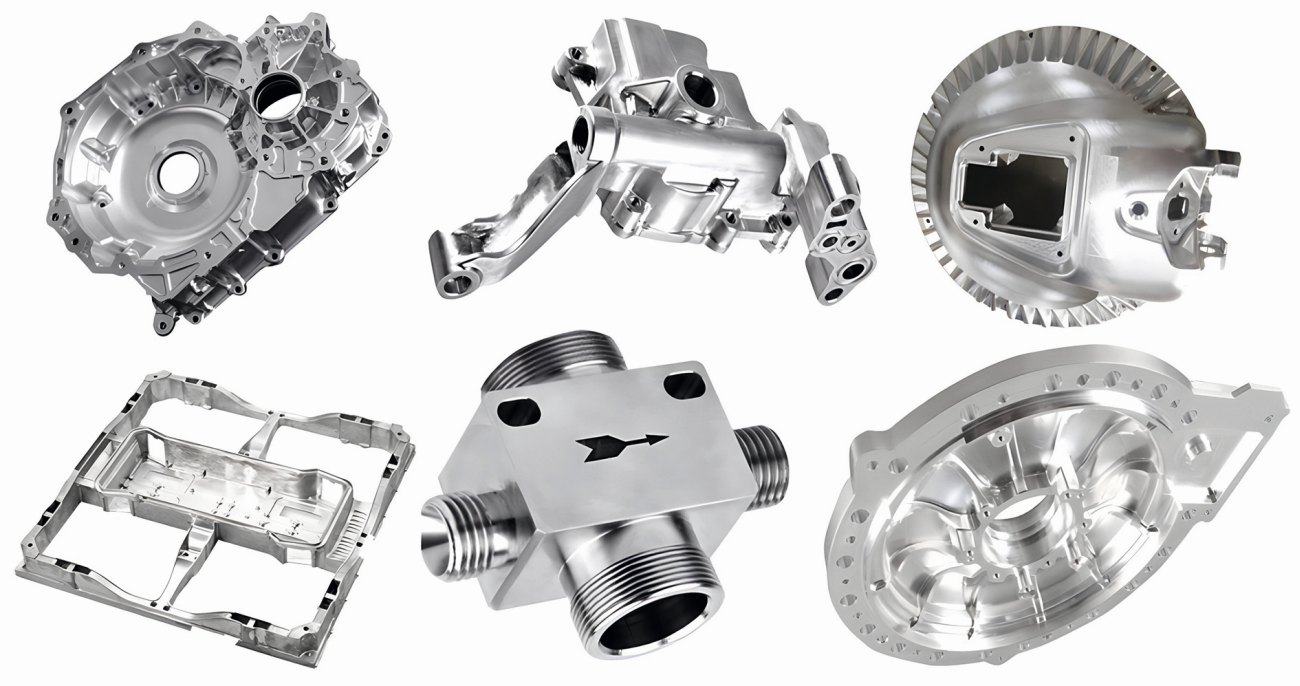 Fig. 7: Magnesium machined parts
Fig. 7: Magnesium machined parts
REFERENCES:
[1]H. Wang; S. Li; D. Li; G. Proust; Y. Gan; K. Yan; D. Tang; P. Wu; Y. Peng: Modeling twinning, detwinning, and dynamic recrystallization of magnesium alloys, MRS Bull., 44, no. 11 (2019) 873-877. doi: 10.1557/mrs.2019.254
[2]Y. Wu; Q. Chen; X. Xia: Isothermal precision forging of magnesium alloy components with high performance, Procedia Eng., 207 (2017) 896-901, 1877-7058. doi: 10.1016/j.proeng.2017.10.848
[3]K. Anderson: Lost Foam Casting, ASM Handbook, Aluminum Science and Technology, K. Anderson; J. Weritz; J. G. Kaufman (Editors), ASM International, 2A (2018) 232-241. doi: 10.31399/asm.hb.v02a.a0006508
[4]Z. Chang; N. Su; Y. Wu; Q. Lan; L. Peng; W. Ding: Semisolid rheoforming of magnesium alloys: A review, Mater. Des., 195 (2020) 108990. doi: 10.1016/j.matdes.2020.108990
[5]R. Decker; S. LeBeau; B. Wilson; J. Reagan; N. Moskovich; B. Bronfin: Thixomolding® at 25 Years, Solid State Phenom., 256 (2016) 3-8. doi: 10.4028/www.scientific.net/SSP.256.3[6]A.A. Luo: Advanced Metal Casting, Encyclopedia of Materials: Metals and Alloys, Francisca G. Caballero (Editor), Elsevier, 3 (2022) 13-26. doi: 10.1016/B978-0-12-819726-4.00084-3

